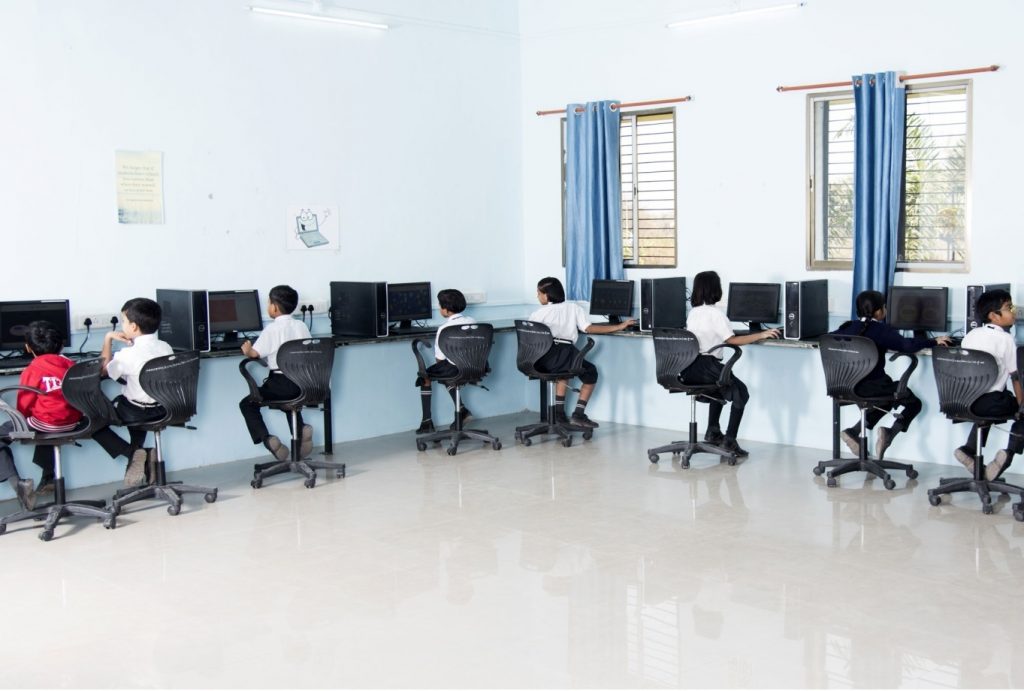In 2002, Media Lab-Asia (ML-A) was launched in India as a partnership between the Government of India and MIT-USA. ML-A was set up to promote joint research programs in technology sectors between MIT and Indian entities. The Computer Aided Learning (CAL) Program of Gyan Shala, to be co-designed and implemented through its sister trust, Development Research Network, was one of the early programs of ML-A, which was funded by InfoDev, World Bank. ML-A withdrew from India in 2003 due to some differences at the level of government, but Gyan Shala went ahead with its CAL program in both rural and urban classes. The impact of this program was analyzed by the Poverty Action Lab (PAL), MIT-USA.
Gyan Shala-CAL had two distinctive-innovative features. First, it was not designed as a stand-alone set of exercises on chosen topics, as was typical of most CAL, at that time. Instead, the CAL exercises were aligned to the pace at which class was progressing, so these could reinforce what happened in the normal class. Second, CAL gave a very large time access to each child, almost 1 hour daily, at low operating cost. To attain the goal of low cost, Gyan Shala evolved an innovative software solution that split the screen into two parts, with one part responding to keyboard and another to the mouse. It then became possible for two children to work on one computer independently as if it was made of two computers. A design team from Microsoft development centre, Bangalore, came to see Gyan Shala-CAL, and then went on to integrate their multi-mouse feature with split-screen feature like Gyan Shala, as an open source platform to develop educational software.

The Gyan Shala-CAL was implemented in 10 rural and ten urban locations, covering 20 classes at each place, with an equal number in the control group. CAL was implemented for one year at each place. The impact of the program was analyzed by the researcher of PAL, MIT, USA, to conclude that the CAL made significant but little improvements in learning levels in all schools, but learning gains were large when the normal class processes were of poor quality. The use of CAL was, thus justified in very poor performing schools like many government schools, but its use in reasonably run schools may not be justified. Gyan Shala also discovered that the cost of operations in rural areas, which did not have assured power supply, became very large due battery fed power.
This research project also allowed the Gyan Shala team to analyze the experience of using CAL in government schools in six countries, namely Australia, Singapore, Philippines, Hong Kong-China, Switzerland, and the USA. The overall conclusion of this study was that CAL did not appear to lead to significant improvement in learning outcomes, or enriched curriculum transactions up to grade 6, except in helping develop computer literacy. The use of internet from grade 7 onwards enabled children to take up learning tasks which could not have been undertaken without CAL. CAL, therefore, appeared to be very potent learning assistance in grade 7 onwards, but its utility at the earlier school stage is suspect.
Detailed report of the study can be accessed at:
https://drive.google.com/open?id=1A3tOpDLNsyhGR5yJ2DkaLeZ72CvdkhF6
